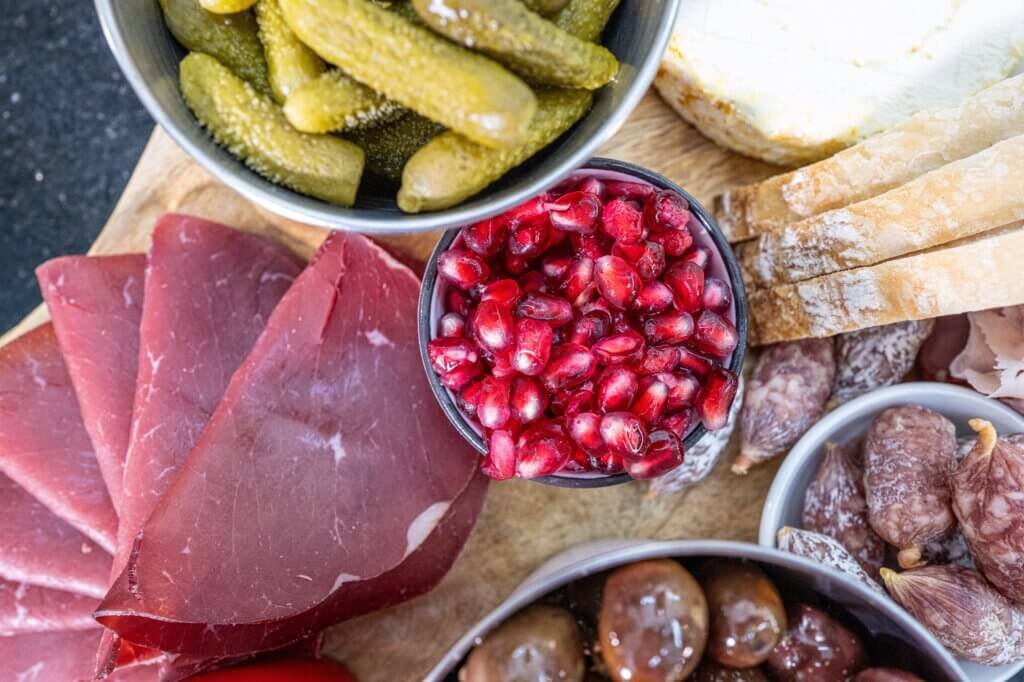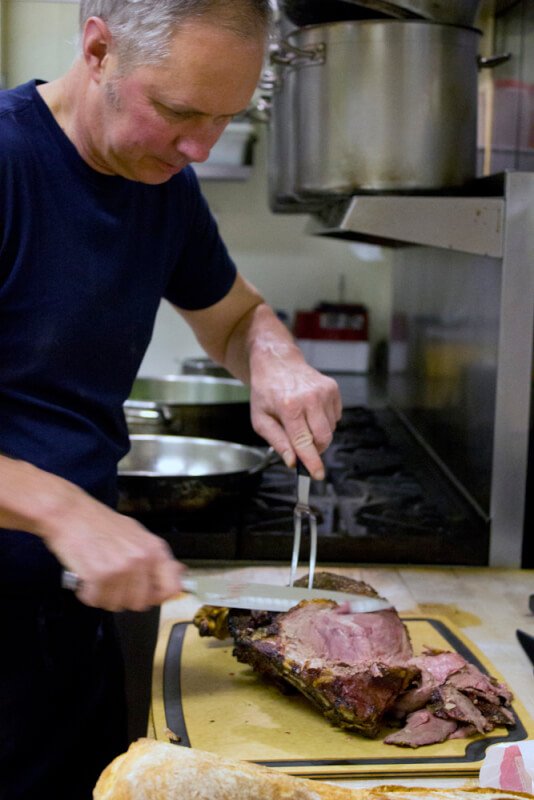In this article, you will discover the art of carving meat like a pro. Whether you’re hosting a dinner party or simply want to impress your family with perfectly sliced meat, mastering the carving technique is a culinary skill worth learning. From choosing the right knife to understanding the different cuts, this guide will provide you with all the tips and tricks you need to confidently carve meat like a seasoned chef. So, grab your apron and sharpen your knives, because it’s time to elevate your meat-carving game.

Choosing the Right Cut of Meat
When it comes to carving meat, choosing the right cut is crucial. Different cuts of meat have different characteristics, flavors, and textures, which will affect the carving process and the overall enjoyment of the dish. Understanding the different cuts available is the first step towards successful meat carving.
Understanding Different Cuts
Before you embark on your meat-carving journey, familiarize yourself with the various cuts of meat. Different cuts come from different parts of the animal and have distinct qualities. For example, cuts from the loin, such as tenderloin or striploin, are typically more tender and suitable for quick cooking methods like grilling or pan-searing. On the other hand, cuts from the shoulder or leg, like chuck or shank, are better suited for slow-cooking techniques to achieve tender, flavorful results.
Considering the Size and Quantity
Aside from the type of cut, you’ll also need to consider the size and quantity of meat you’re planning to carve. If you’re serving a large number of guests, a whole roast or a larger cut of meat may be necessary. However, if you’re preparing a meal for a smaller group or yourself, a smaller portion such as a steak or chicken breast would suffice. Keep in mind that larger pieces of meat may require longer cooking times and different carving techniques.
Quality vs. Budget
Another important factor when selecting the right cut of meat is the balance between quality and budget. While high-quality cuts may yield superior flavors and textures, they often come with a higher price tag. On the other hand, less expensive cuts can still be delicious when cooked and carved properly. Consider your budget and personal preferences when making your decision.
Preparation Before Carving
Before you dive into the act of carving, there are a few essential preparatory steps you should take to ensure the best results. These steps include allowing the meat to rest, seasoning and marinating, and choosing the right tools.
Allowing the Meat to Rest
Once your meat is cooked to perfection, it’s crucial to let it rest before carving. Resting allows the juices to redistribute throughout the meat, resulting in a juicier and more flavorful final product. Simply remove the meat from the heat source and let it sit, loosely covered with foil, for about 10 to 20 minutes. This resting period also makes the meat easier to carve, as it becomes more tender and less prone to tearing.
Seasoning and Marinating
To enhance the flavors of your meat, consider seasoning or marinating it prior to cooking. Dry rubs, marinades, or brines can infuse the meat with additional flavors and tenderize tougher cuts. Be mindful of the flavors you choose, as they should complement the natural taste of the meat. Experiment with different combinations of herbs, spices, and acids, and allow sufficient time for the flavors to penetrate the meat.
Choosing the Right Tools
Having the right tools in your carving arsenal can make the process much easier and more efficient. Ensure that you have a sharp carving knife with a long, thin blade, as this will allow you to make precise cuts and carve through the meat with ease. A carving fork or a sturdy pair of tongs is also essential for securing the meat in place while carving. Keep your tools well-maintained and sharpened for optimal performance.

Basic Techniques for Carving Meat
To achieve professional-looking and perfectly sliced meat, mastering the basic carving techniques is essential. These techniques include positioning and stability, identifying the grain, working with bones, and trimming excess fat.
Positioning and Stability
Before you start carving, ensure that your meat is properly positioned and stable. Place it on a cutting board or a carving platter with a slight incline to allow the juices to migrate away from the meat. Use a carving fork or a pair of tongs to hold the meat in place, ensuring a secure grip that prevents any slipping or sliding during the carving process.
Identifying the Grain
To carve meat effectively, it’s important to identify and understand the direction of the grain. The grain refers to the natural lines of muscle fibers within the meat. By carving against the grain, you can achieve more tender slices. Take a moment to examine the meat and determine the direction of the grain, which will guide you in slicing the meat correctly.
Working with Bones
When carving meat with bones, such as a roast or ribs, it’s essential to understand how to maneuver around them. Make precise cuts along the bone, using the tip of your knife to separate the meat from the bone. Carefully follow the contours of the bone to maximize meat extraction and maintain clean, intact slices.
Trimming Excess Fat
Before you start carving, consider trimming excess fat from your meat. While some fat can enhance flavor, excessive fat can make slicing and serving more challenging. Use a sharp knife to carefully remove any unwanted fat, taking care not to remove too much, as it can contribute to moisture and flavor during the cooking process.
Carving Different Types of Meat
Carving techniques can vary depending on the type of meat you’re working with. Whether it’s a roast, whole chicken, steak, ribs, or game meats, understanding the specific techniques for each type is crucial for achieving the best results.
Carving Roasts
Roasts require precision and care when carving to preserve their tenderness and aesthetics. Begin by identifying the natural seams and muscles within the roast and make strategic cuts against the grain to create slices of even thickness. For larger roasts, such as prime rib, start by carving thicker slices from the center and gradually move to thinner slices towards the outer edges.
Carving Whole Chickens
Carving a whole chicken may seem daunting, but with the right technique, it can be a breeze. Start by removing the legs and wings, following the natural joints. Then, carefully separate the breasts from the breastbone by making an incision along one side and gently slicing through until the meat separates. Proceed to carve thin slices against the grain, working your way towards the back of the bird.
Carving Steaks
Steaks are often cooked to individual preferences and come in various cuts, such as filet mignon, ribeye, or New York strip. Begin by allowing the steak to rest for a few minutes after cooking to ensure optimal tenderness. To carve, use a sharp knife to make thin, perpendicular cuts against the grain. This technique helps to ensure each slice is tender and easy to chew.
Carving Ribs
Ribs are a popular choice for barbecue enthusiasts, and proper carving is crucial to achieve those succulent, fall-off-the-bone results. Start by cutting along the bone between each rib to separate the rack. Then, slice between each bone to create individual servings. For larger racks, such as spare ribs, consider cutting them into smaller sections before serving.
Carving Game Meats
Game meats like venison, elk, or lamb can be challenging to carve due to their unique characteristics. It’s crucial to take the time to understand the specific anatomy and grain patterns of each meat. Use a very sharp knife and make thin, deliberate cuts against the grain to maximize tenderness. Remember to adjust your carving technique depending on the game meat you’re working with.

Tips for Getting Perfect Slices
Getting perfect slices requires not only technique but also attention to detail. These tips will help you achieve consistent, visually appealing slices every time.
Using the Correct Blade
Different cuts of meat may require different types of blades. For thinner cuts like steaks, a slicer knife with a narrow blade is ideal. For larger cuts or roasts, a long, thin carving knife is best. Ensure that your blade is freshly sharpened to minimize tearing and create clean, precise slices.
Sharpening and Maintaining Knives
A dull knife can lead to uneven slices and increased effort during the carving process. Regularly sharpen your knives using a sharpening stone or a honing rod to maintain their cutting performance. Additionally, proper knife maintenance, such as cleaning and storing them correctly, will extend their lifespan and ensure they remain in optimal condition.
Slicing Against the Grain
Remember to always slice against the grain for maximum tenderness. By cutting perpendicular to the grain, you’re shortening the muscle fibers, making it easier to chew. Take the time to identify the grain of the meat before carving, and adjust your slicing direction accordingly.
Controlling Pressure and Angle
When slicing through meat, it’s important to control both the pressure and the angle of your knife. Apply even, gentle pressure to create smooth, clean slices. As for the angle, a slight diagonal or horizontal angle can help produce wider, visually appealing slices. Experiment with different pressure and angle combinations to achieve the desired result.
Serving and Presentation
Carving is not just about slicing meat; it’s also about showcasing your culinary skills. Pay attention to the serving and presentation aspects to enhance the overall dining experience.
Choosing the Right Serving Platter
Selecting an appropriate serving platter is essential for the visual appeal of your carved meat. Opt for a platter that complements the size and shape of the meat. Additionally, consider the material of the platter, as certain types may retain heat better to keep the meat warm for a more extended period.
Arranging and Garnishing Slices
Once your meat is carved, take the time to arrange the slices in an aesthetically pleasing manner. Start by placing the larger, more visually appealing slices at the front and gradually fill in the gaps with thinner slices. Consider adding a garnish, such as fresh herbs or a spritz of lemon juice, to enhance the visual appeal and flavor of the dish.
Maintaining Heat and Moisture
To ensure that your carved meat stays warm and juicy, it’s important to take steps to maintain heat and moisture. You can cover the carving platter loosely with foil or use a warming tray to keep the meat at an optimal temperature. If you’re serving the meat in stages, consider placing a damp cloth or lid over the partially carved sections to prevent drying out.
Serving Portions
When it comes to serving portions, it’s important to strike a balance. Aim to provide generous portions without overwhelming your guests. As a general rule of thumb, allow for about 1/2 to 3/4 pound of meat per person, depending on their appetites and the presence of other dishes. If you have leftovers, you can always store them for later use.
Storing and Using Leftover Meat
Leftover meat can be a gift that keeps on giving if stored and utilized properly. Here are some tips for storing and making the most of your leftover meat.
Proper Storage Techniques
To ensure the quality and safety of your leftover meat, it’s crucial to store it properly. Allow the meat to cool completely before placing it in an airtight container or wrapping it tightly in plastic wrap. Refrigerate the meat promptly, and consume it within three to four days. For longer storage, consider freezing the meat, taking care to wrap it well to prevent freezer burn.
Reheating Leftovers
When it’s time to enjoy your leftover meat, reheating it properly is key to preserving its flavor and texture. Gentle reheating methods like low-temperature cooking, steaming, or briefly searing the meat can help retain its moisture and tenderness. Avoid overheating, as it can lead to dryness and loss of flavor.
Creative Recipes for Leftover Meat
Leftover meat can serve as a versatile ingredient in a wide range of creative recipes. Consider using it in dishes like stir-fries, tacos, sandwiches, or salads. Get creative with sauces, spices, and other ingredients to transform your leftover meat into exciting new dishes. The possibilities are endless, so don’t let that precious leftover meat go to waste.
Carving Etiquette and Tips
Carving meat is not only a culinary skill but also an opportunity to showcase proper etiquette and considerate behavior towards your guests. Here are some tips to keep in mind when carving meat for others.
Proper Table Manners
When carving meat at the table, practice proper table manners to create a pleasant dining experience. Use a serving fork or tongs to hold the meat while carving, and avoid touching the meat with your bare hands. Maintain a steady and confident hand while carving, making each slice deliberate and clean.
Carving for Special Occasions
Special occasions call for extra care and attention when carving meat. Take your time to create well-presented and precise slices, as the overall visual appeal adds to the festivities. Consider rehearsing your carving technique beforehand to ensure a smooth and confident experience during the actual event.
Dealing with Guests’ Preferences
Guests may have various preferences when it comes to the doneness of their meat. To accommodate different tastes, it’s helpful to inquire about their preferences beforehand. Offering a range of carving options, from rare to well-done, allows your guests to enjoy the meat exactly as they like it. Be attentive and adaptable, ensuring that each guest’s plate is customized to their liking.
Troubleshooting Common Carving Problems
Even the most experienced carvers may encounter occasional mishaps or challenges. Here are some common carving problems and how to troubleshoot them.
Overcooked or Dry Meat
If your meat turns out overcooked or dry, it can be challenging to carve without the risk of it crumbling or falling apart. In such cases, consider utilizing sauces or gravies to add moisture and flavor. Additionally, slicing the meat thinner and against the grain can help mitigate the dryness.
Uneven or Ragged Slices
Uneven or ragged slices can be a result of using a dull knife or improper technique. Ensure that your knife is adequately sharpened and use smooth, deliberate strokes when carving. Slicing against the grain and maintaining a consistent angle and pressure will help achieve clean, uniform slices.
Carving Mishaps and Accidents
Carving mishaps and accidents can occur, even to the most experienced carvers. If you accidentally make an incorrect cut or the meat slips while carving, remain calm and adapt. Adjust your carving technique accordingly to salvage the remaining meat, and take the opportunity to get creative with the presentation to mask any imperfections.
Conclusion
Mastering the art of carving meat is a rewarding skill that enhances the dining experience and impresses your guests. By understanding different cuts, preparing the meat before carving, employing basic techniques, and applying these helpful tips, you’ll be well on your way to becoming a confident and proficient meat carver. With practice, patience, and attention to detail, you’ll be able to achieve beautifully carved meat that not only looks impressive but also tastes delicious. So, sharpen those knives, select the perfect cut, and let the carving adventure begin!


